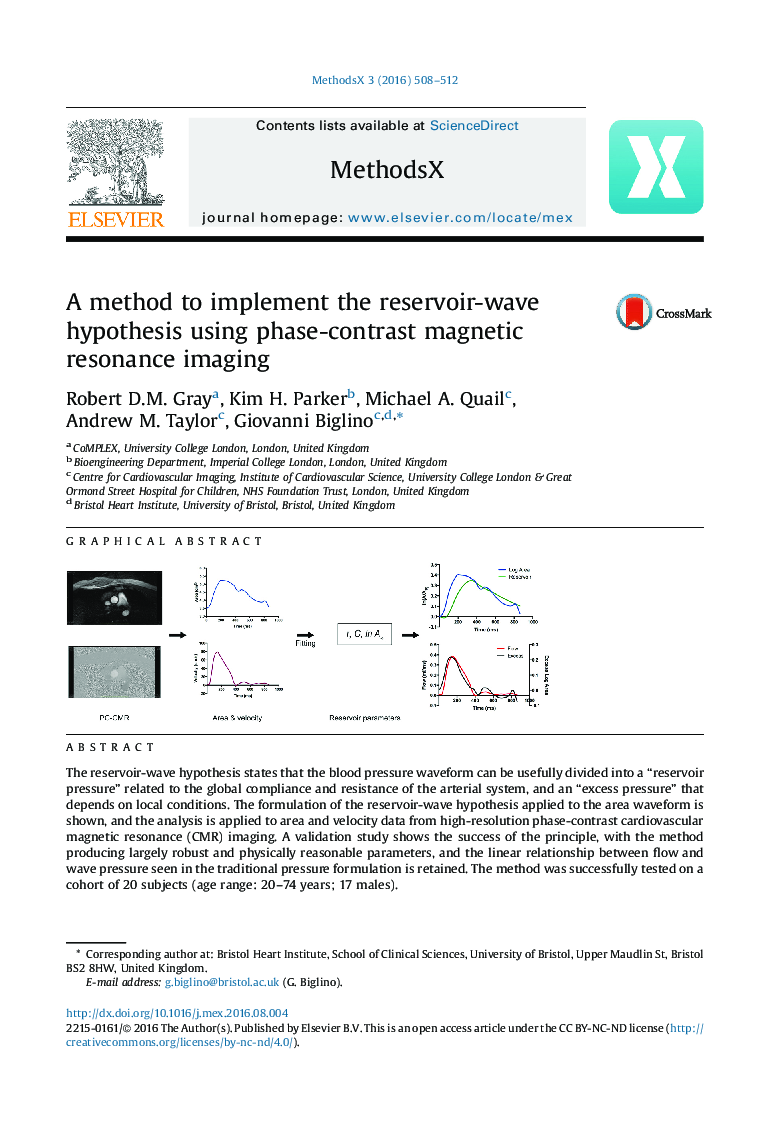| Article ID | Journal | Published Year | Pages | File Type |
|---|---|---|---|---|
| 2058668 | MethodsX | 2016 | 5 Pages |
The reservoir-wave hypothesis states that the blood pressure waveform can be usefully divided into a “reservoir pressure” related to the global compliance and resistance of the arterial system, and an “excess pressure” that depends on local conditions. The formulation of the reservoir-wave hypothesis applied to the area waveform is shown, and the analysis is applied to area and velocity data from high-resolution phase-contrast cardiovascular magnetic resonance (CMR) imaging. A validation study shows the success of the principle, with the method producing largely robust and physically reasonable parameters, and the linear relationship between flow and wave pressure seen in the traditional pressure formulation is retained. The method was successfully tested on a cohort of 20 subjects (age range: 20–74 years; 17 males).This paper:•Demonstrates the feasibility of deriving reservoir data non-invasively from CMR.•Includes a validation cohort (CMR data).•Suggests clinical applications of the method.
Graphical abstractFigure optionsDownload full-size imageDownload as PowerPoint slide
